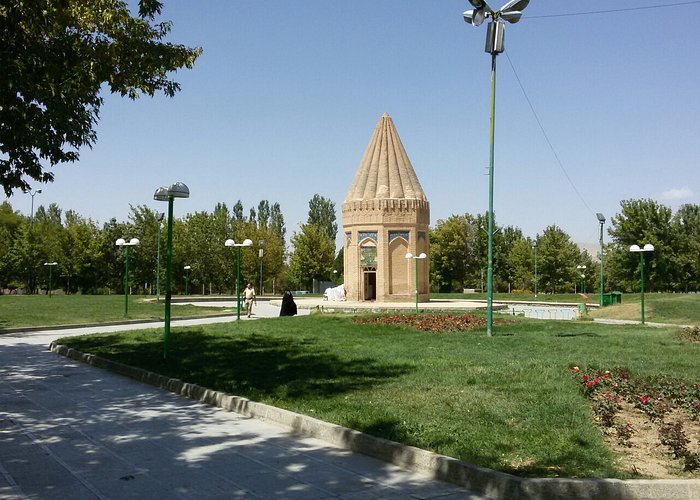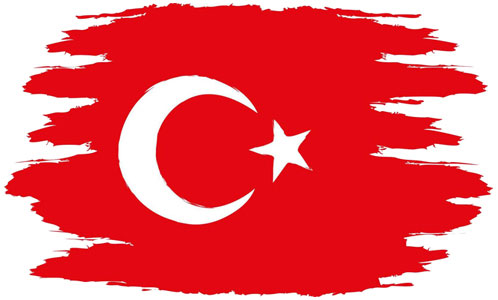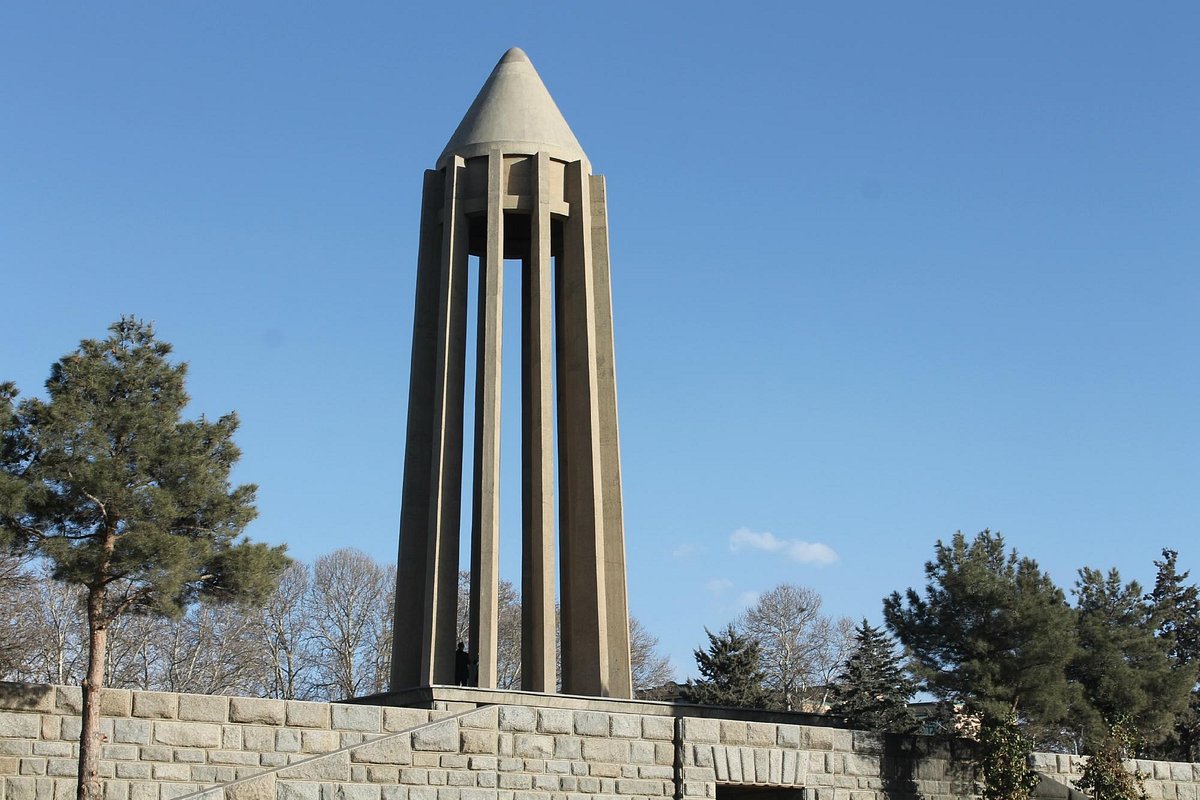Introduction
Iran is a country situated in Southwest Asia with an ancient civilization that can be traced back to 4000 BC. One of its provinces, Hamadan, also known as Hamedan, is located in the west of Iran and is the capital city of the eponymous province. The province is significant, diversely rich, and has been under the limelight due to its cultural and historical significance. The city of Hamadan, in particular, has played a crucial role in Iranian
civilization, being one of the oldest cities worldwide as well as being a hub of learning, arts, and culture over centuries. The province's history, cultural roots, art, literature, social, and economy are unique, which is why this essay aims to explore the above-mentioned areas while discussing their significance in today's world and Iran's efforts toward sustainable development.
Cultural Roots & History
Hamadan province's historical significance comes from its ancient roots which can be traced back to over 3,000 years ago as an
important trading center. Throughout the centuries, it has seen the rise and fall of many empires and civilizations. It has been home to kings and dynasties that have contributed significantly to Iranian culture and art. Some of the well-known invasions include that of Cyrus the Great, Alexander the Great, and Mongols. However, the province has remained impervious to the Arab Conquest in the 7th Century. In the 12th century, Hamadan became a hub of Islamic culture and learning due to the Seljuk Dynasty's patronage. Another significant period that defined Hamadan's history was under the Achaemenid Empire, where it was the residence of the Median kingdom, making it a center of Iranian culture and civilization.
One of the important factors in Hamadan's cultural roots was its location on the Silk Road. The Silk Road was a vital international trade route that connected Asia with Europe. The city flourished due to this trade, which had a significant influence on its culture and economy. The province became an amalgamation of Persian, Central Asian, and Mediterranean cultures. This mixing of cultures led to an amalgamation of various
traditions, which is apparent today in the various art forms, including music and dance forms that have evolved in the province.
Art & Literature
Hamadan province has been a significant center for Persian literature for centuries. The region produced great poets, including Baba Taher, who is regarded as one of Iran's great mystical poets. Baba Taher, who lived in the 11th century, is famous for his quatrains and mystical poetry, which deals with love, sorrow, and religion. Apart from Baba Taher, other notable poets from the province include Rabi'a Balkhi, known for her ecstatic poetry, and Omar Khayyam, a mathematician and astronomer,
who is famous for his Rubaiyat which has been translated into several languages.
Apart from literature, Hamadan has always been a hub of craftmaking. The region has a rich tradition of metalworking, carpet weaving, and pottery making. The famous turquoise ceramics from the city of Laljin, are famous worldwide and are cherished for their intricate designs.
Hamadan's economy was centered around agriculture and animal husbandry in the past
Social & Economy
Hamadan's economy was mainly centered around agriculture and animal husbandry in the past. However, today, it has evolved due to modern industries and infrastructure development. The region is renowned for its handicrafts, which are in high demand both domestically and internationally. Carpets, ceramics, metalworking, and other crafts bring a significant share of the income for people living in the region. The region also has rich mineral deposits, including coal, lead, zinc, and copper. The industry has developed around these resources and has contributed to the
region's economic growth.The social fabric of Hamadan is a reflection of its diverse history and tradition. Despite being from different ethnic backgrounds, the people of Hamadan province share a cultural bond, making it one of the most culturally diverse regions of Iran. The region has seen migration from Armenia, Georgia, and the Caucasus regions. The province's religious landscape is diverse, with many adhering to Shia Islam, Christianity, Zoroastrianism, and Judaism. This diversity has led to the evolution of music and other art forms, which are unique to the region.
Geographical Significance
Hamadan province has unique geographical features that make it one of the most beautiful regions of Iran. The province is situated in the western part of the Zagros Mountains, which have contributed to the region's unique topography. The region is known for its hot, dry summers, and cold winters, and the mountains provide an excellent gateway for trekking and hiking enthusiasts.
One of the significant
natural attractions of the province is the Ali Sadr Cave, one of the most vast water caves in the world. The cave has an underground lake, which is a significant tourist attraction. The province's mountain ranges are also known for their mineral deposits and have played a crucial role in the region's economy.
Role in context of Great Iran Civilization
Hamadan is an important province for Iranian civilization, being one of the oldest cities worldwide and a hub of learning, art, and culture over centuries. The province has played a vital role in Iran's history, particularly during the Median and Achaemenid Empires. The
region's location on the Silk Road, connecting Asia with Europe, has contributed significantly to Iranian culture and art, making it a hub of Persian literature for centuries. The province's cultural roots and history are an integral part of Iran's identity, and to understand the broader Iranian civilization, it is vital to study and understand Hamadan's cultural and historical significance.

Hamadan's culture, art, literature, social, and economy have significance in the world today
Importance & Role of Aspects in today's world
Several of the aspects of Hamadan's culture, art, literature, social, and economy have significance in the world today. The
region's handicrafts, including carpet weaving, pottery making, and metalworking, have gained popularity in recent years due to its unique designs and skillful workmanship. The artisans have been able to fuse traditional art with modern techniques, making their crafts more appealing to modern tastes.
The region's diversity, which has evolved due to migration, has led to the evolution of music and other art forms, which are unique to the region. The music is characterized by the sound of traditional instruments, including the tanbur and tar, and the region has several renowned musicians who have gained recognition internationally.
The province's natural attractions, including the Ali Sadr Cave, and the mountain ranges, are a significant tourist attraction, and the region has been able to develop around this sector. The province's mineral
resources, including coal, lead, zinc, and copper, have contributed significantly to the economy.
Competitive Advantages in Iran's Contemporary Progress toward Sustainable Development
Iran has made strides in recent years to achieve sustainable development, and Hamadan province can contribute significantly to this goal. The region's rich tradition of craftmaking can provide employment opportunities for people, and Iran can use these as an export to generate foreign exchange. The province's handicrafts can play a significant role in Iran's economy, as the demand for handcrafted goods is increasing worldwide.
The region's mineral resources can also be exploited for Iran's economic growth, and the government can invest in modern mining
techniques to exploit these resources sustainably. The region's natural attractions can be developed further to attract tourists, and the government can take steps to preserve the region's environment to ensure its natural beauty is preserved.
Conclusion
In conclusion, Hamadan province is significant for Iran and the world due to its cultural roots, history, art, literature, social, economy, and geographical significance. As one of the oldest cities worldwide, the region has played a vital role in
Iran's civilization, particularly during the Median and Achaemenid Empires. The region's handicrafts, music, and other art forms have gained popularity, while the natural attractions have become significant tourist attractions. The region's mineral resources and handicrafts have the potential to drive Iran's economic growth, and the development of its natural attractions can contribute to sustainable tourism. Understanding Hamadan's cultural and historical significance is vital to understanding Iran's identity and progress toward sustainable development.
Dear Visitor; Please take a look at the list of 50 most visited websites in the world wide web: YouTube, Facebook, google, translate, gmail, weather, amazon, Instagram, cricbuzz, Hotmail, wordle, satta king, twitter, yahoo, yandex, sarkari result, Netflix, google maps, yahoo mail, roblox, whatsapp, NBA, BBC news, outlook, pinterest, flipkart, eBay, omegle, live score, tiktok, canva, ipl, premier league, hava durumu, ibomma, walmart, twitch, ikea, shein, linkedin, home depot, e devlet, lottery, snaptik, cricket, serie a, nfl, spotify, fox news, amazon prime; There is no book publishing related or project management website in this list. We are working hard to bring these important issues to the center of concentration of societies. Please introduce us via social media, share our website with others and help us to make our world a better place to live. Best Regards.













Write your review